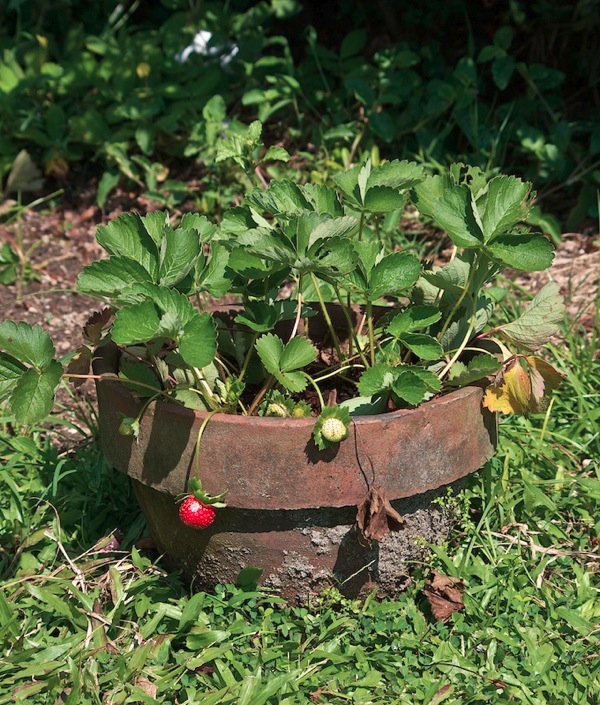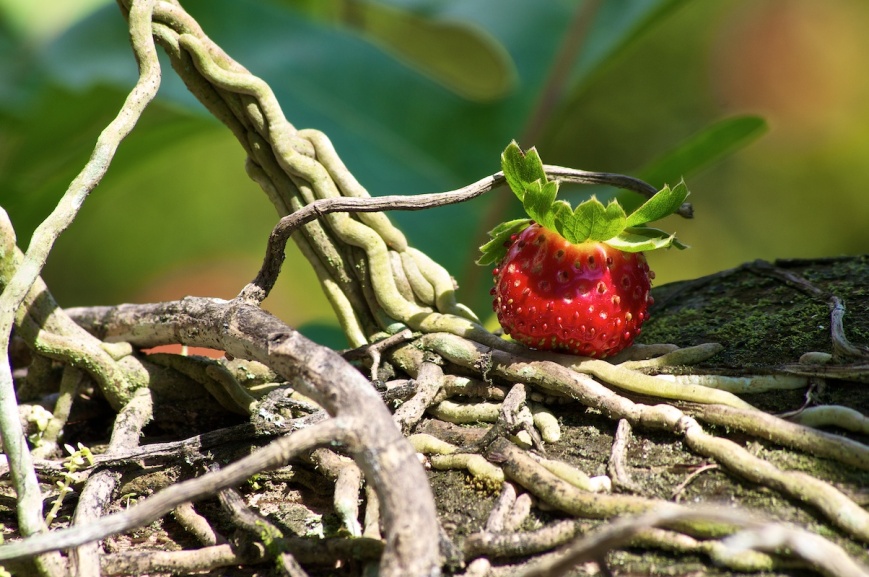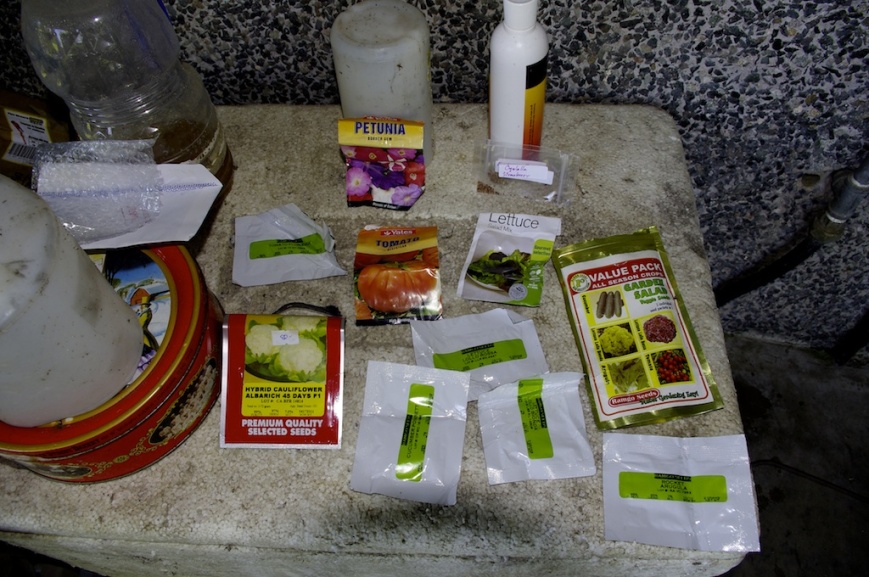I did an experiment with strawberries to see if I could get them to flower and fruit in a hot, humid climate, such as the Philippines. What I did has been done before, and I got the idea from some research that has been done at the Agricultural Engineering department, specifically the, Agro-meteorology, Structures, etc. division at the University of the Philippines Los Baños. Well I am pleased to say that my experiment was successful. My strawberries flowered and I got little berries!!! How’d I do it? That’s my little secret for now ;-). I need to redo the experiment as well as try a different one. Still a lot to improve, like the berry size, but the flavor was good, although on the sour side (that’s what sugar is for). For now, here are the results, a ripe little berry.
I took the above picture with the Pentax k-r using the DA-L 55-300. The bokeh that this lens produces is beautiful and it’s a just consumer zoom. If you are a Pentax user and need a good zoom lens that won’t break the bank, this is it. Want more info on this lens? Head on over to the Pentax Forums and check out the extensive lens database.
For you doubters, here’s the pot =). That read one is the one in the picture above, before I picked it of course.



